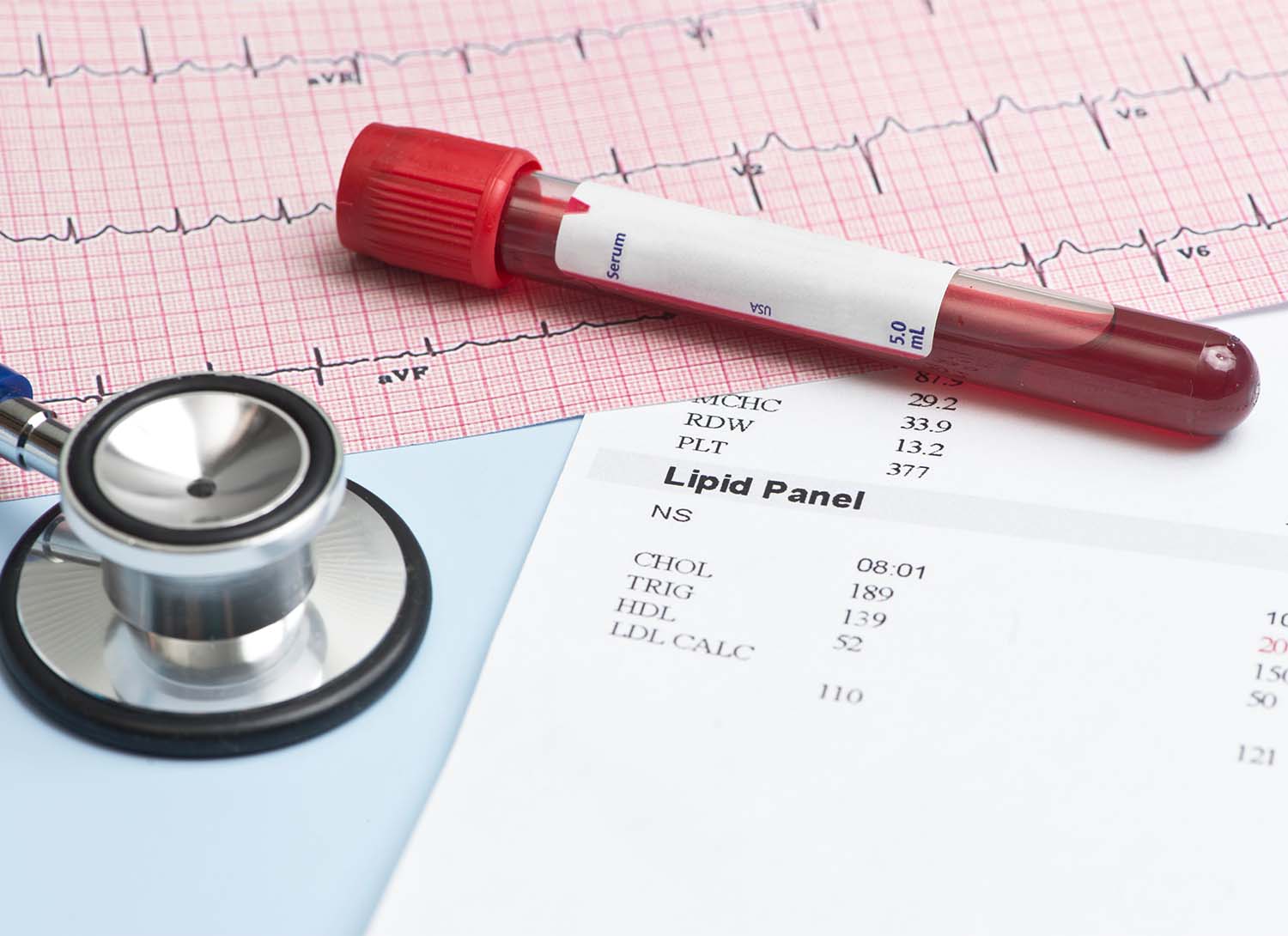
Dr. Eric Venn-Watson’s Highlights
Bloodwork is important to ensuring our bodies are healthy. Blood tests help to reveal how our cells, the very foundations of every bodily system, are operating. There are numerous blood tests available, but one of the standard tests almost everyone can benefit from is a lipid panel.
Lipid panels can reveal insights about our overall health and clue us in on whether or not we’re at risk of developing certain diseases and conditions. However, if you’re on Medicare, you might wonder if lipid panels are covered and how often you’ll be able to get them.
Together, we’ll discuss what lipid panels are, why you need them, and how often you need them. We’ll also talk about how frequently you can get a lipid panel if you’re on Medicare, and how a healthy lifestyle and a surprising supplement can keep your doctor happy with your lipid panel results.
What Is a Lipid Panel?
Lipids are fats, and a lipid panel is a measurement of the level of certain fats in your blood. Your doctor might refer to a lipid panel as a lipid profile, cholesterol panel, or lipid test. Usually, the test is the same regardless of the name.
What To Expect
A lipid panel can be done in one of two ways: fasting or non-fasting. Typically, a routine lipid panel consists of a 10-12 hour fast. You’ll have a small amount of blood drawn at the end of the fast. The doctor then sends the blood to a lab for testing, and your healthcare provider will receive the results of the test and discuss them with you.
Understanding Your Lipid Panel
Even though your doctor may discuss your test results with you, it’s a good idea to familiarize yourself with the terms used in the lipid panel to better understand what’s going on in your body.
There are five different measurements in your lipid panel: four lipids and a triglyceride measurement. Let’s simplify these measurements and make them easy to understand.
What Are the Lipid Panel Measurements?
You may refer to the lipid panel as a measure of your cholesterol and whether or not your cholesterol is in “good” or “bad” standings. In truth, the test is a lot more in-depth than just a reading of good or bad.
Cholesterol is measured in milligrams per deciliter.
Total Cholesterol
The first measurement is total cholesterol — this is the measurement of your combined low-density lipoprotein (LDL), high-density lipoprotein (HDL), and very-low-density lipoprotein (VLDL) results. Normal cholesterol should be lower than 200 mg/dL, and high cholesterol is anything over 240 mg/dL.
While much focus is given to total cholesterol, focusing on your individual LDL and HDL numbers can help you achieve a better total cholesterol reading.
Low-Density Lipoprotein
This measure is your LDL cholesterol. LDL is the cholesterol that your doctor refers to as your “bad” cholesterol. This type of cholesterol can collect in your arteries and lead to atherosclerosis when levels are too high.
According to general guidelines, your LDL reading should be below 130 mg/dL for a normal patient. If you have heart disease or diabetes, your goal may be lower than 100 mg/dL. Your LDL is considered high when it reaches 160-189 mg/dL. Too much LDL cholesterol can place you at a significantly higher risk of developing heart disease, heart attack, and stroke.
Very-Low-Density Lipoprotein
This type of cholesterol is usually found in higher concentrations in the blood immediately after eating. If your doctor has ordered a fasting lipid panel, this number should be low. If it’s high, it could indicate a potential issue with how your body metabolizes lipids.
High-Density Lipoprotein
This measurement refers to your HDL or “good” cholesterol. This type of cholesterol acts as a counterbalance to LDL cholesterol, working to decrease the amount of LDL circulating in your bloodstream by transporting it to the liver for removal.
Based on general recommendations, your HDL cholesterol should read between 40-60 mg/dL. According to new research, a lipid panel that reflects HDL over 60 mg/dL can actually increase your risk.
Triglycerides
Triglycerides are fats from the foods you eat, after your body has converted the calories it needs. Not all fats are bad — in fact, some are essential for our bodies.
However, triglycerides are linked to an increased risk of cardiovascular disease. A triglyceride reading of less than 150 mg/dL is considered normal, so if your triglycerides are between 200-400 mg/dL, your reading is usually considered high.
Why Are Lipid Panels Important?
If you feel healthy, it may seem unnecessary to get a lipid panel. However, high cholesterol doesn’t necessarily have any notable symptoms outside of a lipid panel screening. This means you might not feel any differently or notice any changes in your overall well-being.
Because high cholesterol numbers place you at risk of developing heart disease, the number one killer of American adults, getting a regular lipid panel is important.
When Should You Get a Lipid Panel?
It’s recommended that most people get a regular lipid panel to ensure that issues with cholesterol can be managed before they become serious problems. Generally speaking, healthy adults should get a lipid panel every 4-6 years.
You may need a panel more frequently if you have other risk factors, such as obesity, high blood pressure, or heart disease.
How Often Will Medicare Pay for a Lipid Panel?
It goes without saying that medical testing can become expensive. If you have Medicare, you should know that they will generally cover the cost of a routine lipid panel once for healthy adults once every five years.
However, if you’ve had a high lipid panel in the past or meet certain risk factors, you may be eligible to receive a lipid panel sooner or on a more frequent basis.
How Can You Promote Healthy Cholesterol?
We all want good results from our lipid screenings, but if you return a higher than normal test result, there are lifestyle changes you can make to help support a better test next time.
Diet
Our diets can place us at a higher risk of developing unhealthy cholesterol numbers. Trans fats, excess sodium, refined carbohydrates, and a lack of nutrients can lead to higher numbers, especially triglycerides.
Opting for more whole grains, fruits, and vegetables can help keep you satisfied, provide you with the proper vitamins and nutrients, and support a healthier overall cholesterol number.
Exercise
Getting more physical activity can be challenging for our busy lifestyles. However, physical exercise can help raise your HDL or “good” cholesterol, which may help lower your LDL or “bad” cholesterol.
Work towards 30 minutes per day of heart-pumping exercise to reap these cholesterol-lowering benefits.
Try a Supplement
Supplements can help fill in dietary gaps and ensure our bodies are getting what they need. In terms of cholesterol management, it’s important to look at what’s happening in our cells.
Our cells determine our overall health because they are foundationally the building blocks of every system in our bodies. When our cellular health declines, our overall health declines, and we can develop disease and negative health markers.
Supporting cellular health is as easy as supplementing with a fatty acid known as C15:0.
Elevate your cells. Elevate your self.
Buy NowC15:0 and Your Cells
While helping dolphins live healthier lives,Dr. Stephanie Venn-Watson, a veterinary epidemiologist, while working at the US Navy, discovered that some geriatric dolphins had fewer age-related illnesses than others.
Dr. Venn-Watson found that higher circulating levels of the fatty acid C15:0 led to many of the benefits in the healthiest dolphins. She then dug deeper, exploring the health benefits of this molecule in human populations. Three years later, she published her findings in Nature's Scientific Reports in 2020, proposing C15:0 as an essential fatty acid, which means C15:0 would be the first essential fatty acid to be discovered since the omegas almost a century earlier. Since her publication in 2020, over 50 peer-reviewed scientific papers have been published supporting the benefits of C15:0.
How C15:0 Works
C15:0 helps support your cellular health in several important ways:*
-
Increased mitochondrial function. As cells age, the power plants inside of them known as mitochondria can become sluggish. Cells then lose their ability to function properly, which creates a domino effect that can lead to age-related illness. C15:0 helps to restore mitochondrial function by up to 40%, so your cells get the fuel they need to function as they should.
-
Cell membrane support. As our cells age, their protective membranes become flimsy and weak, leaving them susceptible to external stressors and damage. As a sturdy fatty acid, C15:0 integrates itself into cell membranes, keeping them strong and supported.
-
Improved cellular signaling. When our cells lose the ability to communicate, entire systems can decline. C15:0 helps improve cellular signaling by activating special receptors called PPARs that regulate functions like mood, appetite, and even sleep. Part of this regulation includes cholesterol level homeostasis and may explain why C15:0 promotes healthy cholesterol levels.
While omega 3s and C15:0 have some similarities (they are both essential fatty acids) C15:0 has been found to have a better ability to support the health of our cells. Further C15:0 does not have some of the drawbacks of omega 3s. C15:0 is a stable fatty acid that will not oxidize or go rancid. Omega 3s however, have double bonds that make them fragile and prone to oxidation which can lead to potential toxicity.
How To Increase Your C15:0 Intake
C15:0 is found in trace amounts in whole-fat dairy products and in some plants and fish. The recent turn towards plant-based products (meats, dairy, etc) means we probably aren’t getting as much C15:0 as we need since products like plant-based milks are completely deficient in C15:0. (That said, a lot of us aren’t getting the C15:0 we need to thrive even with a decent amount of dairy in our regular diet.)
In addition, as we age our levels of C15:0 decrease over time. That means every year that passes, our levels of C15:0 are lower and lower.
The solution? Fatty15.
Fatty15: Promote your heart health
Fatty15 is the only once-a-day supplement that contains the pure, vegan-friendly version of C15:0. This supplement was created to help give your cells a fighting chance. Just one capsule a day can help support a healthier feeling you.*
Sources:
Lipid Panel: What It Is, Purpose, Preparation & Results | ClevelandClinic.org
Lipid Panel | Johns Hopkins Medicine
Getting Your Cholesterol Checked | cdc.gov
Top 5 lifestyle changes to improve your cholesterol | Mayo Clinic

Eric Venn-Watson M.D.
CEO, Co-Founder
Senior Scientist, Co-Founder
Eric is a physician, U.S. Navy veteran, and Co-founder and COO of Seraphina Therapeutics. Eric served over 25 years as a Navy and Marine Corps physician, working with the special forces community to improve their health and fitness. Seraphina Therapeutics is a health and wellness company dedicated to advancing global health through the discovery of essential fatty acids and micronutrient therapeutics.
You May Also Like...
When Does Cognitive Decline Start?
Almost everyone will experience some cognitive decline in their lifetime. Learn which decade is most closely associated with thinking trouble.
List of Cognitive Changes in the Elderly as They Age
Are you wondering where your keys are? Not being able to find them could be due to cognitive changes in your brain as you age.


